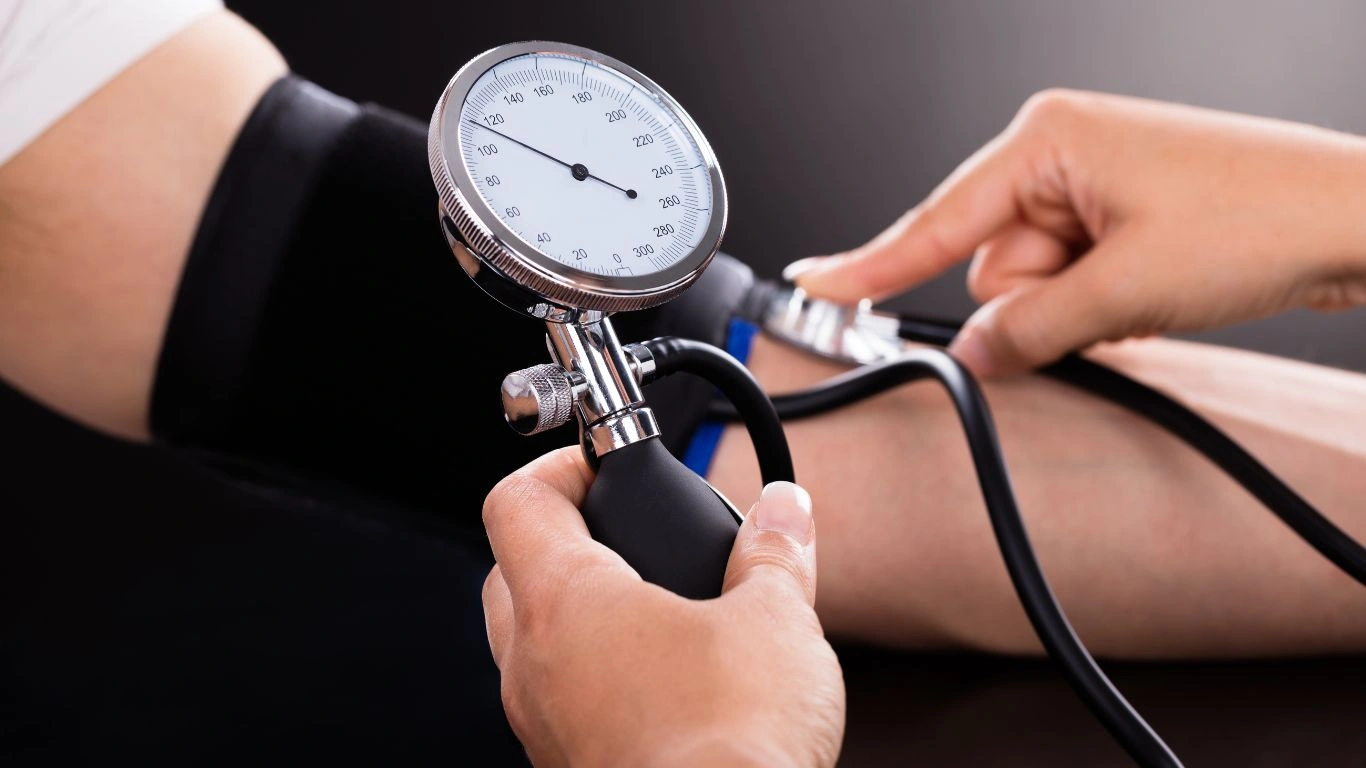How to Create a Low-Sodium Grocery List That Actually Works
If you’ve ever stood in the middle of a grocery store aisle squinting at a food label wondering if it’s “low sodium enough,” trust me, you’re not alone. I’ve been there—both as a physician and as someone trying to coach patients through lifestyle changes that stick. Learning how to create a low-sodium grocery list isn’t just about what to avoid—it’s also about what you can enjoy without risking your blood pressure climbing like it’s training for a mountain marathon. Over the years of managing hypertension in my patients, I’ve learned that preparation is everything, and that starts with your grocery list. Let’s dive into the practical, the doable, and dare I say, the delicious side of eating with less salt.
Why Sodium Matters More Than Most People Think

We talk about sodium like it’s this invisible villain lurking in our pantry—and honestly, in some ways, it is. Most of the sodium in our diet doesn’t come from the salt shaker. It’s hiding in plain sight in packaged soups, sandwich meats, frozen meals, and even “healthy” snacks. As someone who treats hypertension daily, I can’t stress enough how crucial it is to monitor sodium intake. A small reduction in sodium can have a big impact—especially for folks already dealing with high blood pressure or those genetically predisposed.
I’ve had countless patients tell me, “But I don’t even add salt to my food!” The truth is, you don’t have to. The sodium’s already there. So that grocery list? It’s your first line of defense.
Step One: Rewire Your Shopping Brain

This is where I always tell my patients: we don’t need a complete pantry overhaul overnight. Instead, we need a new way of looking at food—starting with mindful label reading and understanding your sodium budget.
Know Your Daily Sodium Limit
The American Heart Association recommends aiming for no more than 1,500 mg of sodium per day for adults, especially for those with hypertension. That number is shockingly easy to blow through if you’re not paying attention. One canned soup can pack over 900 mg!
Get Label-Savvy
Here’s a cheat sheet I give my patients when navigating labels:
- “Sodium-free” = Less than 5 mg per serving
- “Very low sodium” = 35 mg or less per serving
- “Low sodium” = 140 mg or less per serving
- “Reduced sodium” = At least 25% less than the regular version (still might be too high!)
One of my patients once brought me a “reduced sodium” soy sauce proudly thinking it was low sodium—turns out it still had over 500 mg per tablespoon. Marketing can be tricky. Read the fine print.
The Game-Changer: Build Your Low-Sodium Grocery List by Category

Instead of wandering aimlessly (which, let’s be real, happens to the best of us), organize your list by food category. This helps you shop with purpose and keeps you from tossing impulse buys into your cart “just in case.”
1. Produce (Your Best Friend)
Fresh fruits and vegetables are naturally low in sodium and loaded with potassium, which actually helps counterbalance sodium’s effect on blood pressure. Stock up on:
- Leafy greens (spinach, kale, romaine)
- Berries (blueberries, strawberries, raspberries)
- Bananas, oranges, apples
- Sweet potatoes and regular potatoes
- Broccoli, cauliflower, bell peppers
I always say, the more colors on your plate, the better your heart will thank you.
2. Whole Grains
Not all grains are created equal. Go for the unseasoned, unprocessed versions:
- Brown rice
- Quinoa
- Old-fashioned oats (not instant!)
- Whole wheat pasta (check labels!)
- Barley
Avoid pre-seasoned rice packets—those are sodium landmines. I’ve seen some with over 800 mg per serving!
3. Proteins: Pick Smart
This is usually where people slip up without realizing. Skip the deli meats and go for these:
- Fresh or frozen chicken breast (no added broth or seasoning)
- Lean ground turkey or beef (watch for sodium-preserved types)
- Eggs and egg whites
- Tofu and tempeh (unsalted varieties)
- Dried or no-salt-added canned beans
If buying canned beans, I recommend rinsing them well under cold water—it can reduce sodium by up to 40%.
4. Dairy and Dairy Alternatives
You’d be surprised how much sodium hides in cheese and even some yogurts. Look for:
- Low-sodium cottage cheese (it exists!)
- Plain Greek yogurt
- Unsweetened almond or oat milk (check for added salt)
- Mozzarella (lower in sodium than most cheeses)
A patient once told me she was swapping salty snacks for string cheese—smart move, but we had to check the label. Some brands have nearly 200 mg per stick!
5. Snacks and Pantry Staples
This is where label-reading becomes non-negotiable. Some go-to items include:
- Unsalted nuts and seeds
- Popcorn kernels (air-pop them yourself)
- No-salt-added peanut butter
- Low-sodium broth (or better yet, make your own!)
- Salt-free spice blends
Quick tip: I love making my own trail mix at home with unsalted almonds, dried cranberries, and pumpkin seeds. Way better than the store-bought ones loaded with preservatives and sodium.
What to Skip: Sodium Bombs in Disguise

One of the biggest “aha” moments I see patients have is when they realize where sodium is *really* coming from in their diets. If you’re serious about learning how to create a low-sodium grocery list, it’s just as much about knowing what to leave out as it is about knowing what to buy.
The Sneaky Offenders
Even foods that sound healthy can be packed with salt. Here are some of the usual suspects I caution patients about:
- Canned soups and broths – Even “light” or “healthy” versions can pack 600-900 mg per serving.
- Deli meats and cold cuts – One slice of turkey breast can have up to 300 mg, and nobody eats just one slice.
- Frozen meals – Many “lean” or “low-fat” meals rely on sodium for flavor, often exceeding 1,000 mg in a single tray.
- Instant noodles – Some of the worst culprits. One pack often exceeds 1,200 mg—basically your whole day’s allowance.
- Pickles, olives, and jarred condiments – These can be sodium landmines, especially if you snack on them without thinking.
I had a patient who thought switching from chips to pickles was a smart choice—and while yes, calorie-wise it seemed better, her sodium intake nearly doubled. Small switches, big consequences.
Flavor Without the Salt: Season Like a Pro

Here’s a little truth from my own kitchen: salt is addictive, and our taste buds adapt fast. But the good news? They also *recalibrate* just as fast. I’ve seen patients go from salting everything to loving meals seasoned only with herbs and spices—within weeks.
Salt-Free Doesn’t Mean Flavor-Free
My pantry at home (and in the clinic kitchen where I demo cooking tips) is loaded with the following sodium-free heroes:
- Garlic (fresh, roasted, or powdered—unsalted of course)
- Onions and shallots
- Lemon or lime juice for brightness
- Vinegars (balsamic, apple cider, red wine)
- Fresh and dried herbs: rosemary, thyme, oregano, cilantro, basil
- Spices like paprika, turmeric, cumin, and black pepper
One of my go-to combos is smoked paprika and garlic powder on roasted veggies—no salt needed, and it’s incredibly flavorful. I always suggest patients create their own spice blends at home and keep them handy. That way, you’re not tempted by pre-mixed seasoning packets (most of which are sodium bombs in disguise).
Try Salt-Free Seasoning Blends
Brands like Mrs. Dash (now branded as Dash), Spiceology, or homemade blends can transform bland into bold. Check the ingredients, though—some blends sneak in potassium chloride instead of sodium. While that’s okay for most, folks with kidney disease need to be careful. Another reason working with your physician (hi 👋) matters!
Shopping Smarter: In-Store Tips That Actually Work

Once you have your list, it’s time to hit the store—and this is where strategy counts. Over the years, I’ve walked patients through mock shopping trips and even joined community cooking classes. These little tricks consistently make grocery trips easier and healthier:
Shop the Perimeter First
Have you ever noticed that the freshest, least processed items are almost always found along the store’s outer edges? That’s where you’ll find produce, dairy, fresh meats, and more. The inner aisles? That’s where processed, packaged, sodium-heavy items tend to live.
I always say: If it has a commercial, it probably has too much salt. Think about it—when was the last time you saw an ad for kale?
Don’t Shop Hungry
This one might sound like something your grandma told you—but she was right. When you shop hungry, impulse buys skyrocket, and those tend to be processed snacks with high sodium. Grab a protein-rich snack before heading in. I usually go for a boiled egg or a small banana.
Use Apps to Scan Sodium Levels
There are several handy grocery apps that let you scan barcodes and get instant nutrition breakdowns, including sodium content. My patients love this because it takes the guesswork out of the equation. Try apps like Fooducate or Yuka. Knowledge is power—and now it fits in your pocket.
Meal Planning: Your Secret Weapon Against Hidden Sodium
One of the most underrated ways to control sodium intake? Cook more at home. It doesn’t have to be gourmet or time-consuming. Just simple meals made with fresh ingredients can significantly reduce your daily sodium load.
Batch Cooking Basics
Batch cooking changed everything for so many of my busy patients. Sunday afternoon? That’s meal prep time. Here’s what I recommend:
- Pick 2 proteins (like grilled chicken and lentils)
- Pick 2 grains (brown rice and quinoa)
- Prep 4-5 veggies (roasted or raw)
- Whip up 2 salt-free sauces or dressings
Mix and match through the week. Not only does it save time, but it also helps you skip that last-minute takeout order that can derail a low-sodium streak.
Sample Low-Sodium Meal Ideas
- Grilled salmon with lemon and garlic, roasted sweet potatoes, steamed broccoli
- Quinoa bowl with black beans, corn, avocado, tomatoes, and cumin-lime vinaigrette
- Whole wheat pasta tossed with olive oil, sautéed zucchini, and fresh basil
Simple, tasty, and blood-pressure friendly. Trust me—these meals won’t leave you missing the salt at all.
Educate Your Household (and Maybe Your Friends Too)
Creating a low-sodium grocery list is a powerful step—but what really makes it stick is getting your household on board. I always encourage patients to talk with their family about why they’re making these changes. The more support you have, the easier it is to make lasting habits.
I once had a patient whose partner started making weekly “low-sodium recipe challenges” for them to cook together. Not only did it keep things fun—it also helped them stay accountable, without it feeling like a chore.
How to Read Food Labels Like a Pro

If there’s one skill I wish every patient would master, it’s decoding those sneaky food labels. When you’re learning how to create a low-sodium grocery list, label-reading isn’t just helpful—it’s essential.
Start With the Serving Size
This might seem obvious, but it’s where many folks trip up. That seemingly modest 300 mg of sodium might actually be per half-cup—and you’re eating the whole can. Boom, 600+ mg down the hatch.
Use the “% Daily Value” Trick
Here’s a little shortcut I teach my patients: if the sodium percentage is 5% or less per serving, it’s low. If it’s 20% or higher, put it back on the shelf (unless it’s a rare treat). This simple trick helps cut the noise when you’re speed-shopping.
Watch for Sodium Aliases
Salt goes by many names, and some sound deceptively innocent. Keep an eye out for these ingredients:
- Monosodium glutamate (MSG)
- Sodium benzoate
- Disodium phosphate
- Sodium nitrate or nitrite
When I first explain these in clinic, I usually see a few raised eyebrows—especially from folks who thought MSG was just a Chinese takeout thing. It’s in everything from chips to salad dressings.

Let’s be honest—eating low-sodium isn’t always easy. Life gets messy. Travel happens. Family dinners, office parties, and “just one bite” moments sneak in. Here’s how I help patients stay on track without feeling like they’re missing out.
Dining Out Without Derailing
I’m not anti-restaurant—I’m realistic. Life’s too short to never eat out. But you can dine out smarter:
- Look up menus ahead of time and pick your meal before you’re hungry
- Request no added salt and sauces on the side
- Skip soups and bread baskets—they’re sodium central
- Ask for lemon wedges or olive oil for flavor
One of my patients actually carries a small salt-free seasoning blend in her purse. She sprinkles it on steamed veggies at restaurants—and her friends started asking for it too!
Travel Tips for Low-Sodium Success
Whether it’s a road trip or a long flight, having a sodium-conscious plan is crucial. I usually pack a small snack kit with:
- Unsalted nuts or trail mix (DIY, not store-bought)
- Low-sodium tuna pouches
- Whole grain crackers (check the sodium, some are surprisingly okay)
- Fresh fruit or veggie sticks
Airports are notorious for salt overload, so coming prepared can literally save your blood pressure.
Staying Motivated (Because This is a Long Game)
Changing how you shop and eat takes more than knowledge—it takes commitment, and sometimes a little emotional support. As a physician, I’ve seen firsthand that sustainable change only happens when it aligns with real-life rhythms, not just a list of “shoulds.”
Track Progress—But Not Just the Numbers
Sure, seeing your BP trend downward is amazing. But I always encourage patients to track wins beyond the cuff:
- Are you sleeping better?
- Feeling more energized?
- Less bloated?
- Cooking more meals at home?
These are all signs that your low-sodium lifestyle is working—even before your labs catch up.
Build a Support System
Whether it’s a walking buddy, a low-sodium recipe swap group, or your local dietitian, don’t go this alone. There are more people than you think navigating this same path. In fact, you might inspire someone just by sharing what’s in your grocery cart.
Let’s Recap: Your Low-Sodium Grocery Game Plan
By now, you’ve got a full playbook. You know how to create a low-sodium grocery list, what to avoid, how to find hidden salt, and how to keep food fun and flavorful. Here’s a final quick-glance summary to keep you grounded:
- Shop the perimeter for fresh produce, lean proteins, and whole grains
- Use herbs, spices, citrus, and vinegar to build flavor
- Read labels, check serving sizes, and aim for under 140 mg per serving
- Limit processed, frozen, canned, and restaurant foods
- Batch cook and prep with intention
- Stay curious, experiment, and be kind to yourself
As someone who’s walked this journey alongside hundreds of patients, I can say with confidence—it’s worth it. You’ll likely feel better, eat better, and even reconnect with the joy of mindful eating.
References
Disclaimer
This article is for informational purposes only and is not a substitute for professional medical advice, diagnosis, or treatment. Always consult your physician or a qualified healthcare provider before making any changes to your diet, especially if you have existing medical conditions such as hypertension, kidney disease, or heart failure.

Dr. Gwenna Aazee is a board-certified Internal Medicine Physician with a special focus on hypertension management, chronic disease prevention, and patient education. With years of experience in both clinical practice and medical writing, she’s passionate about turning evidence-based medicine into accessible, actionable advice. Through her work at Healthusias.com, Dr. Aazee empowers readers to take charge of their health with confidence and clarity. Off the clock, she enjoys deep dives into nutrition research, long walks with her rescue pup, and simplifying medical jargon one article at a time.






